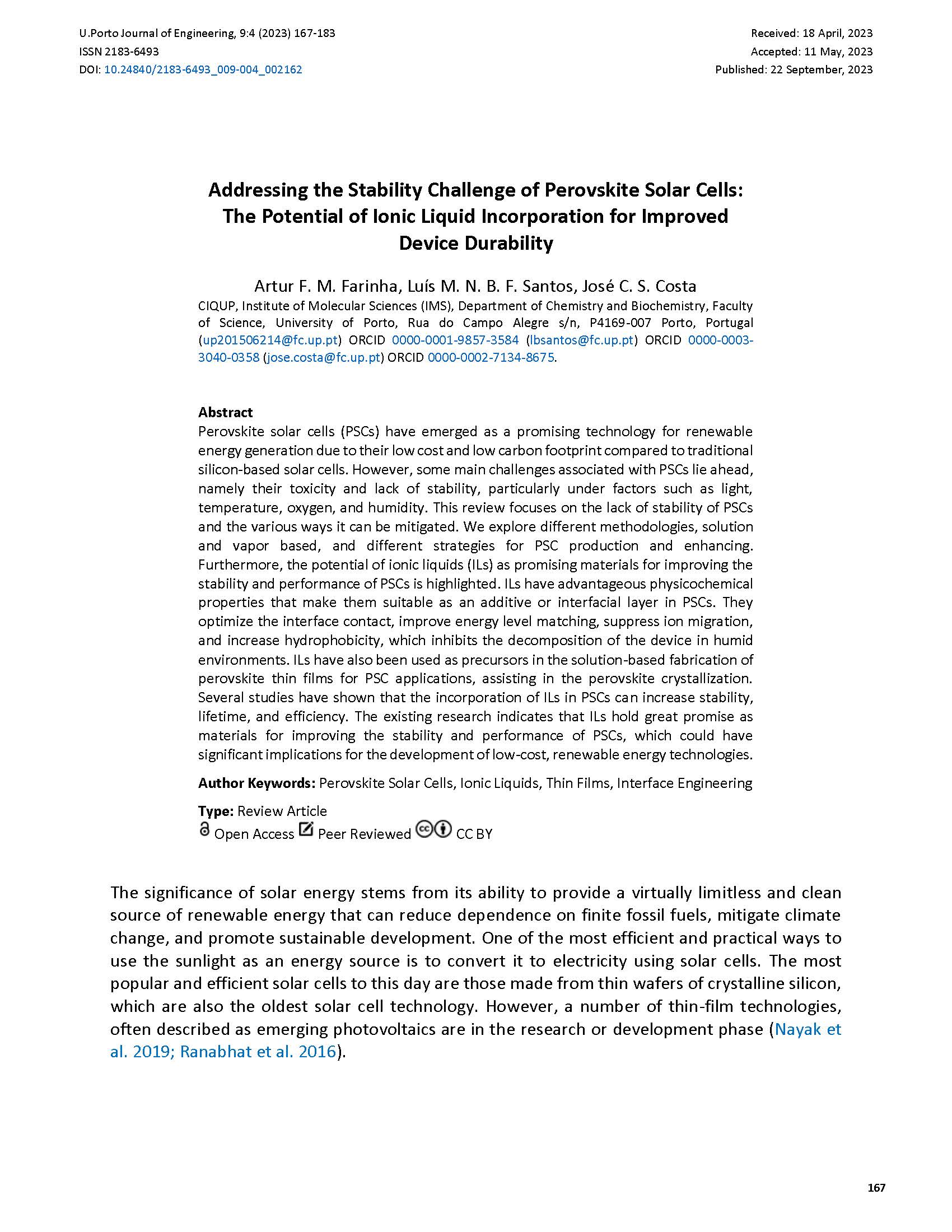Addressing the Stability Challenge of Perovskite Solar Cells: The Potential of Ionic Liquid Incorporation for Improved Device Durability
Main Article Content
Abstract
Perovskite solar cells (PSCs) have emerged as a promising technology for renewable energy generation due to their low cost and low carbon footprint compared to traditional silicon-based solar cells. However, some main challenges associated with PSCs lie ahead, namely their toxicity and lack of stability, particularly under factors such as light, temperature, oxygen, and humidity. We focus on the lack of stability of PSCs and the various ways it can be mitigated. We explore the use of vapor deposition methods, which can increase the crystallinity of the perovskite and thus improve stability and lifetime. Furthermore, we look into the potential of ionic liquids (ILs) as promising materials for improving the stability and performance of PSCs. ILs have advantageous physicochemical properties that make them suitable as an additive or interfacial layer in PSCs. They optimize the interface contact, improve energy level matching, suppress ion migration, and increase hydrophobicity, which inhibits the decomposition of the device in humid environments. ILs have also been used as precursors in the solution-based fabrication of perovskite thin films for PSC applications, assisting in the perovskite crystallization. Several studies have shown that the incorporation of ILs in PSCs can increase stability, lifetime, and efficiency. Overall, the existing research indicates that ILs hold great promise as materials for improving the stability and performance of PSCs, which could have significant implications for the development of low-cost, renewable energy technologies.
Downloads
Article Details

This work is licensed under a Creative Commons Attribution 4.0 International License.
Authors who publish with this journal agree to the following terms:
- Authors retain copyright and grant the journal right of first publication with the work simultaneously licensed under a Creative Commons Attribution License that allows others to share the work with an acknowledgement of the work's authorship and initial publication in this journal.
- Authors grant the journal the rights to provide the article in all forms and media so the article can be used on the latest technology even after publication and ensure its long-term preservation.
- Authors are able to enter into separate, additional contractual arrangements for the non-exclusive distribution of the journal's published version of the work (e.g., post it to an institutional repository or publish it in a book), with an acknowledgement of its initial publication in this journal.
- Authors are permitted and encouraged to post their work online (e.g., in institutional repositories or on their website) prior to and during the submission process, as it can lead to productive exchanges, as well as earlier and greater citation of published work (See The Effect of Open Access).

